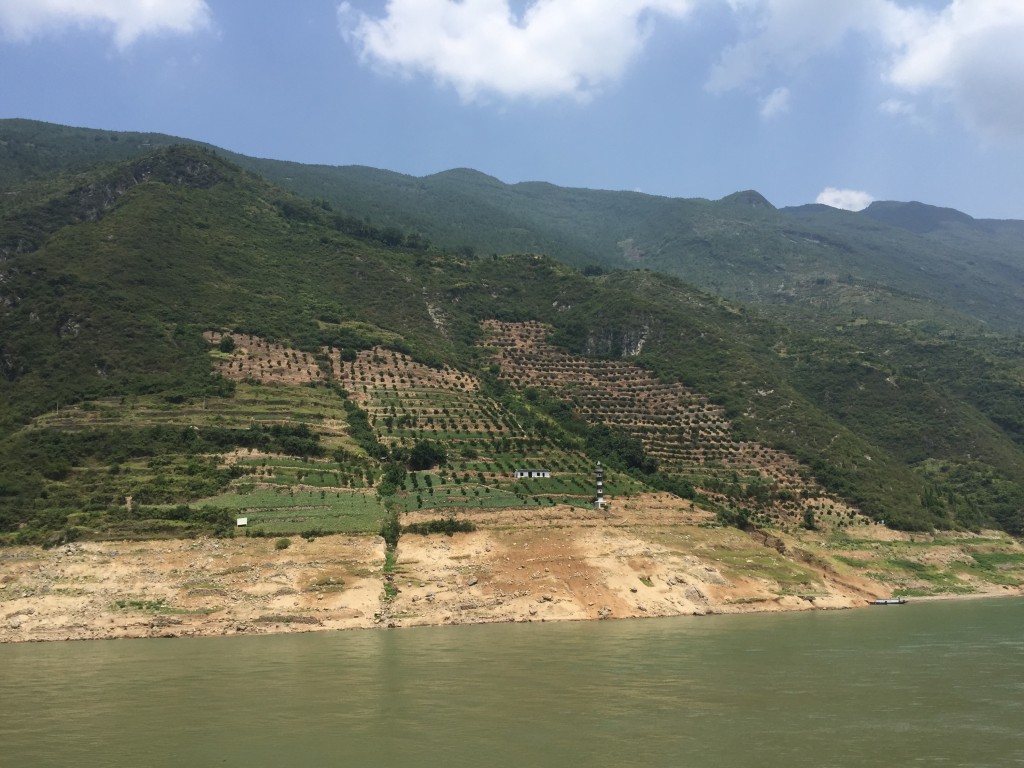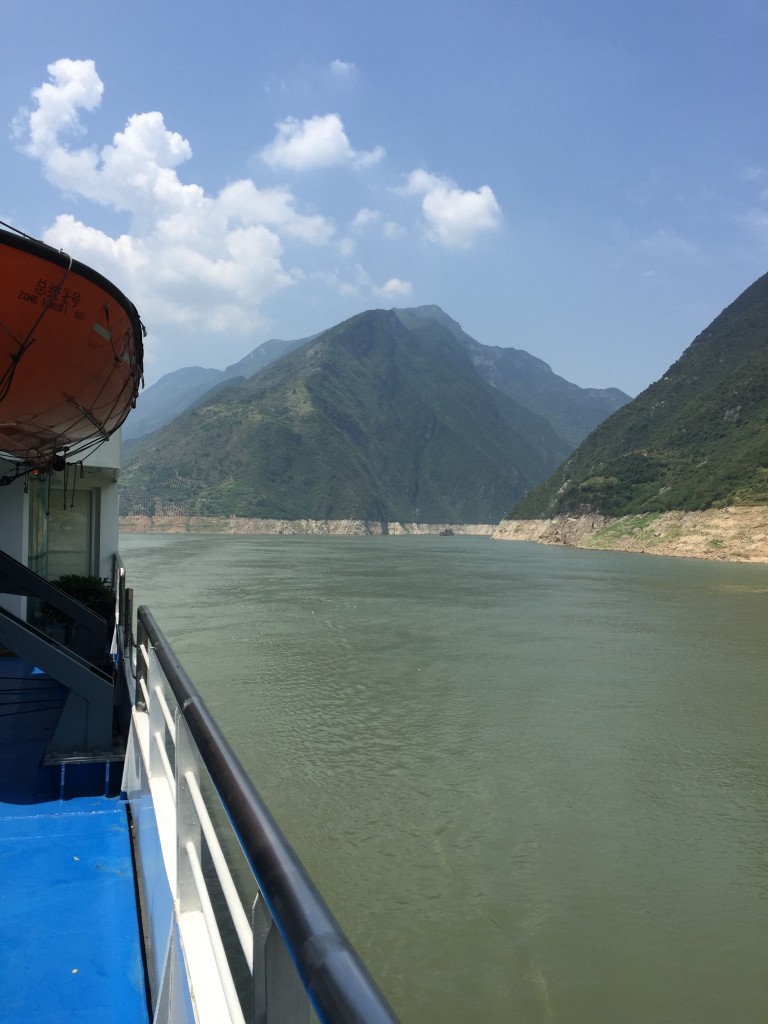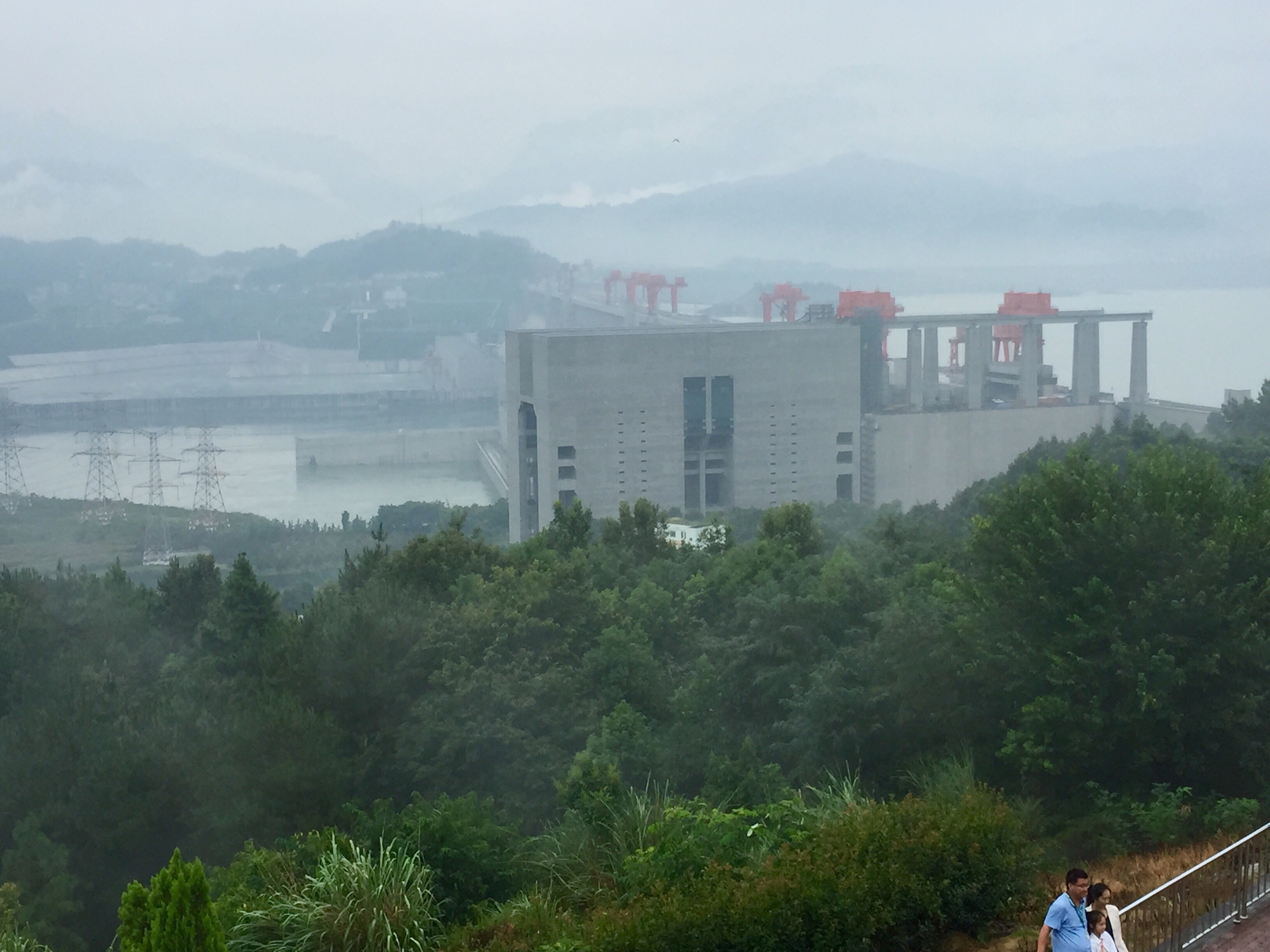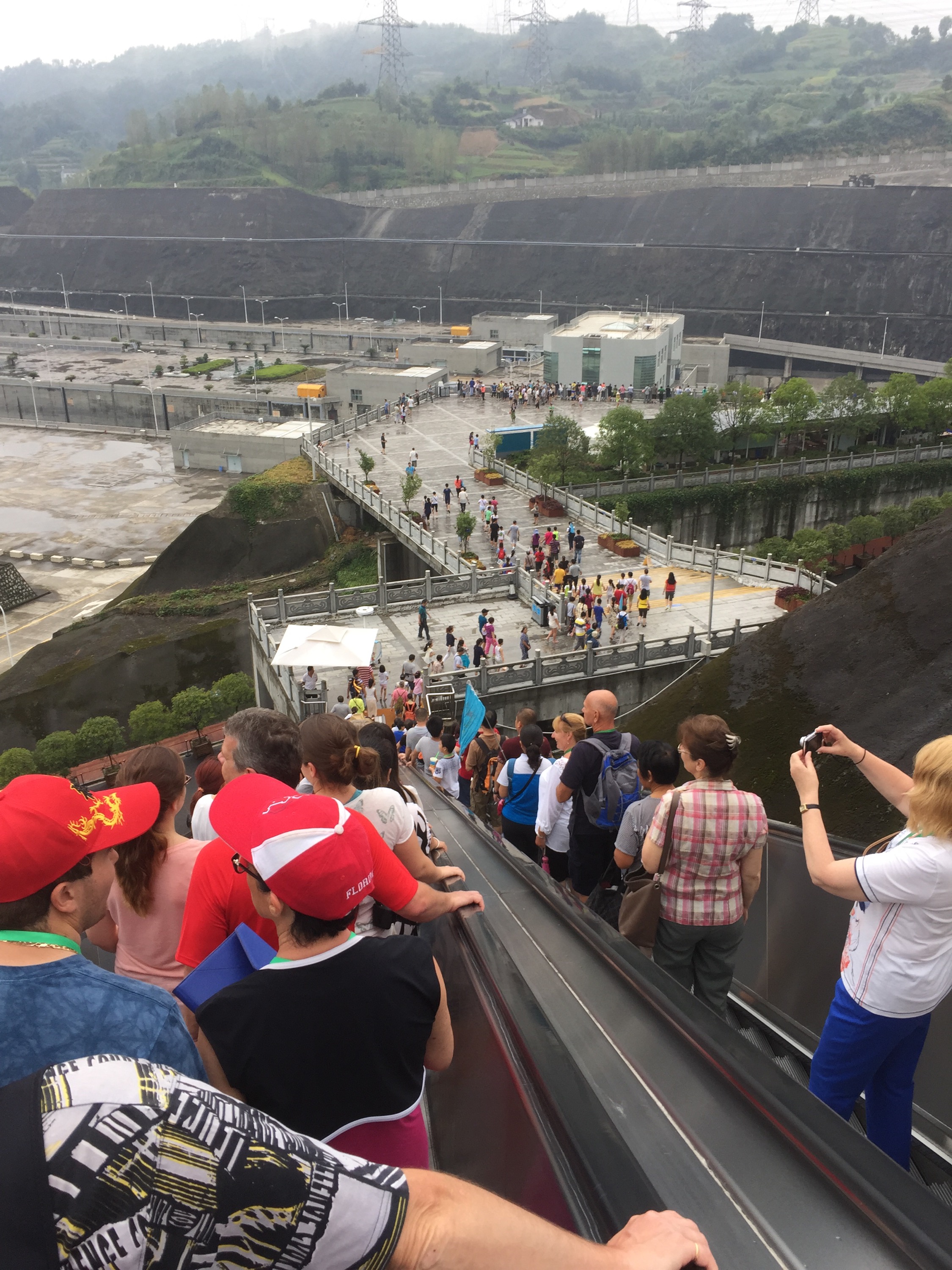We’ve just spent the last three nights doing a Yangtze river cruise on the President No. 7 river boat (not sure it’s a cruise ship when compared to what we are used to, but … meh). Cruising on the Yangtze is very much one of ‘the things’ to do when travelling in China. It’s a great way to see the countryside, and the Chinese by all accounts are very proud of this particular river and of course the Three Gorges Dam project which has recently been completed and is working full steam ahead.
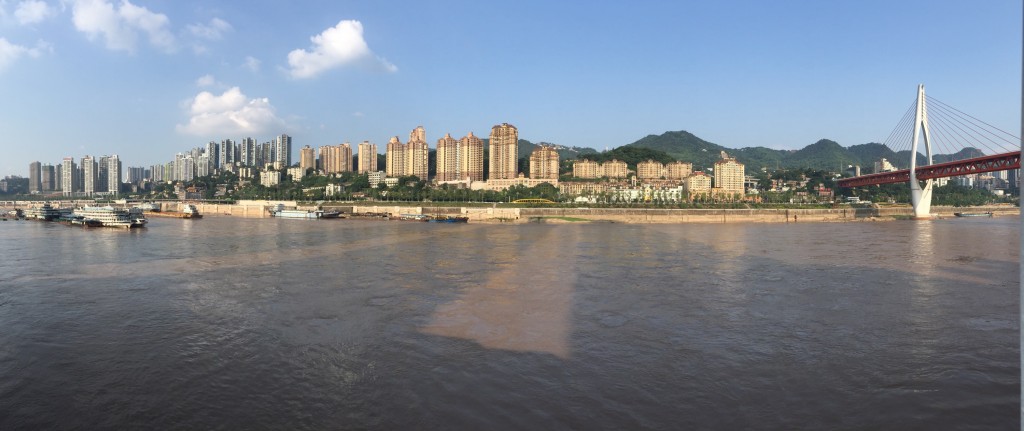
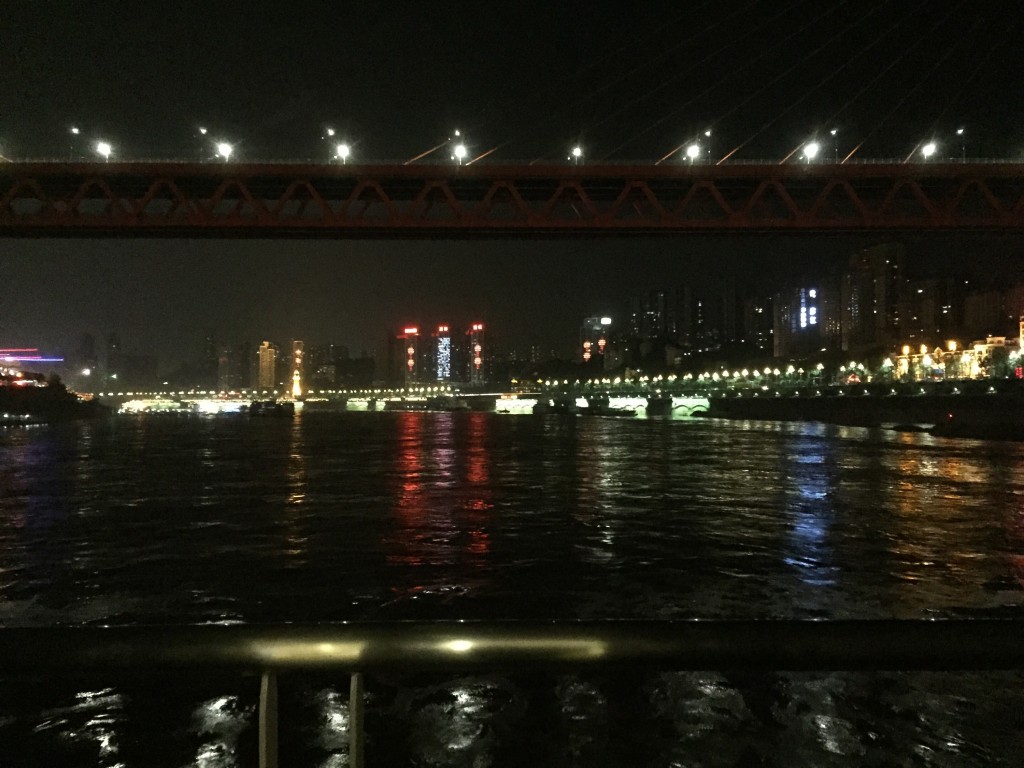 We started off our trip in Chongqing, a city of some 32 million people… it is still hard for me to get my head around the enormity of the number of people. But I think I have met most of them, and nearly every single one of them stared and pointed at the short blonde with the very fair complexion. Bleh.
We started off our trip in Chongqing, a city of some 32 million people… it is still hard for me to get my head around the enormity of the number of people. But I think I have met most of them, and nearly every single one of them stared and pointed at the short blonde with the very fair complexion. Bleh.
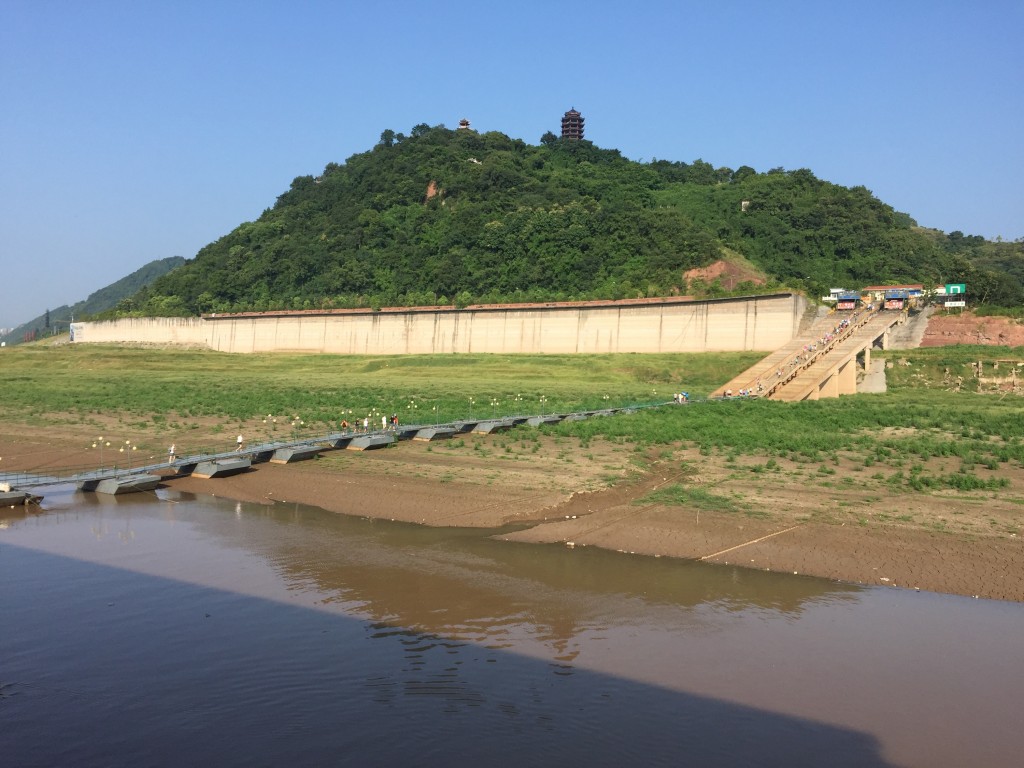
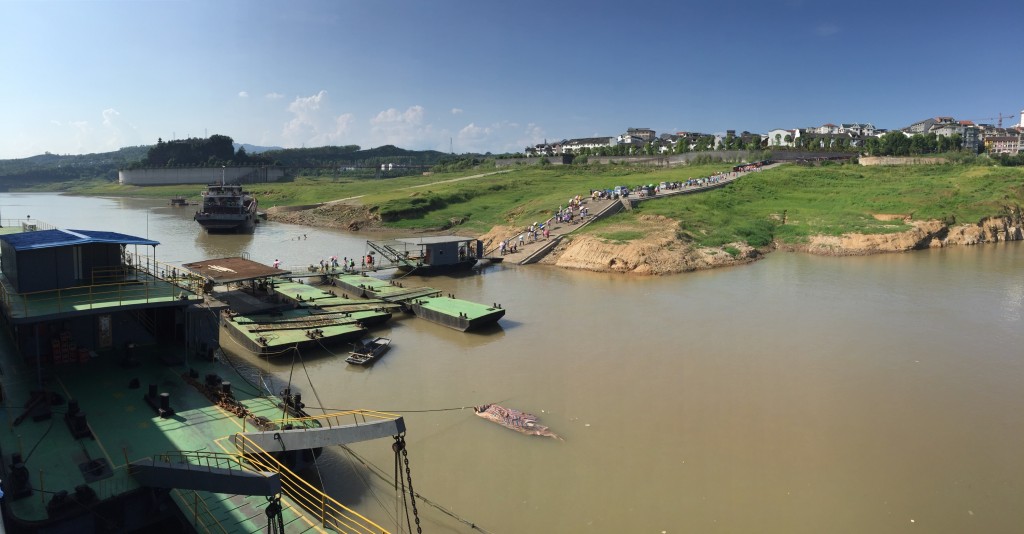
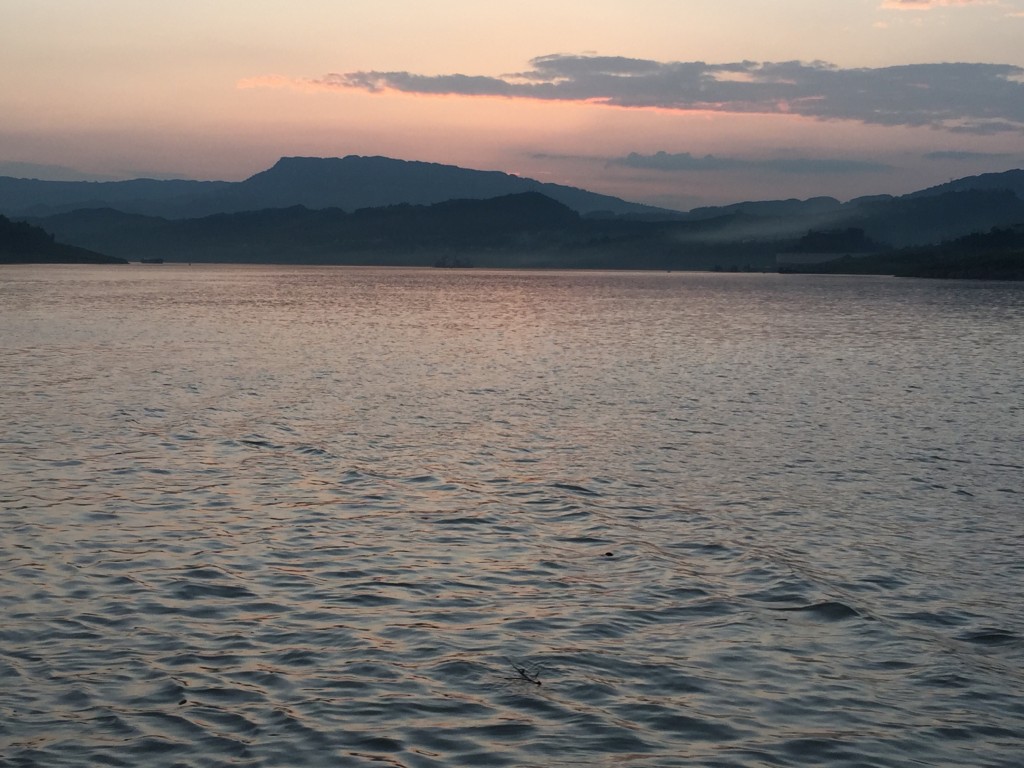
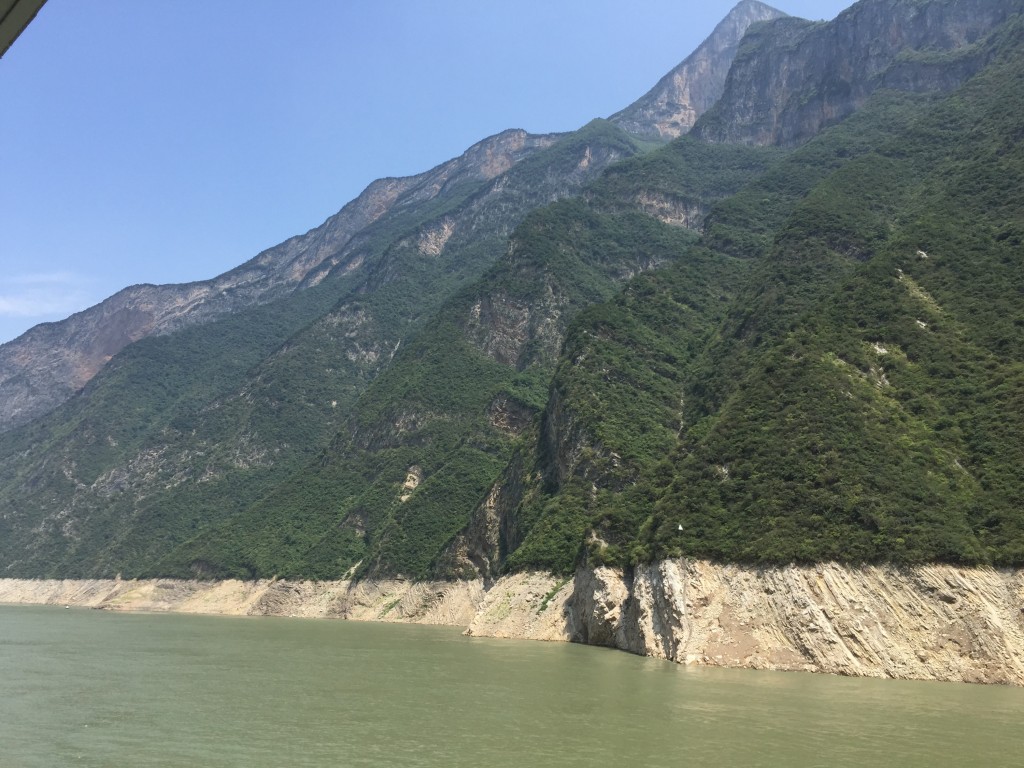 The scenery we went through was beautiful – steep banks, lovely green mountains, shrouded in mist, quaint villages and enormous cities gracing its banks. The river itself is… well… it’s fucking filthy. We saw more empty drink bottles, shoes, dead fish, discarded fishing nets, plastic bags and crap than you could count. There was little wildlife around (other than birds) and the water had this awful scum on it. Yet, there were women washing laundry at the river’s edge, people swimming, people fishing and recreating on this horribly dirty river.
The scenery we went through was beautiful – steep banks, lovely green mountains, shrouded in mist, quaint villages and enormous cities gracing its banks. The river itself is… well… it’s fucking filthy. We saw more empty drink bottles, shoes, dead fish, discarded fishing nets, plastic bags and crap than you could count. There was little wildlife around (other than birds) and the water had this awful scum on it. Yet, there were women washing laundry at the river’s edge, people swimming, people fishing and recreating on this horribly dirty river.
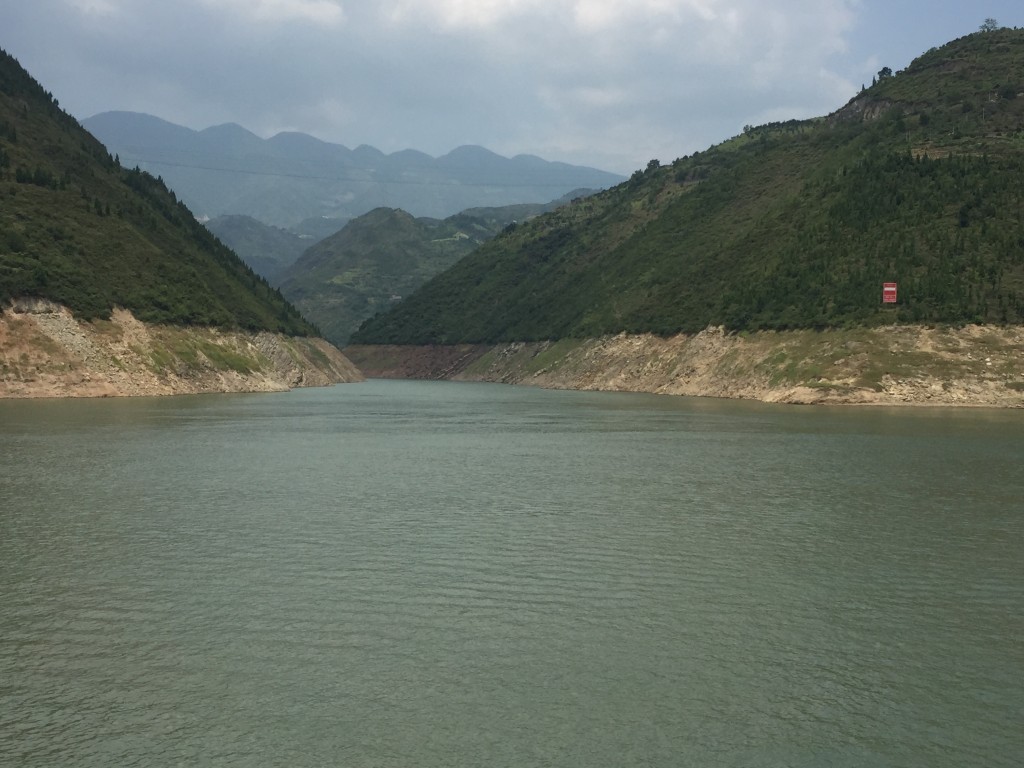 The first day our boat stopped for an opportunity to go see the Ghost City of Fengdu (I had to give this a miss -408 steps not counting the 80-100 to get from the boat to river bank). In the afternoon, we moved on to Badai for a walk to the famous Pagoda there.
The first day our boat stopped for an opportunity to go see the Ghost City of Fengdu (I had to give this a miss -408 steps not counting the 80-100 to get from the boat to river bank). In the afternoon, we moved on to Badai for a walk to the famous Pagoda there.
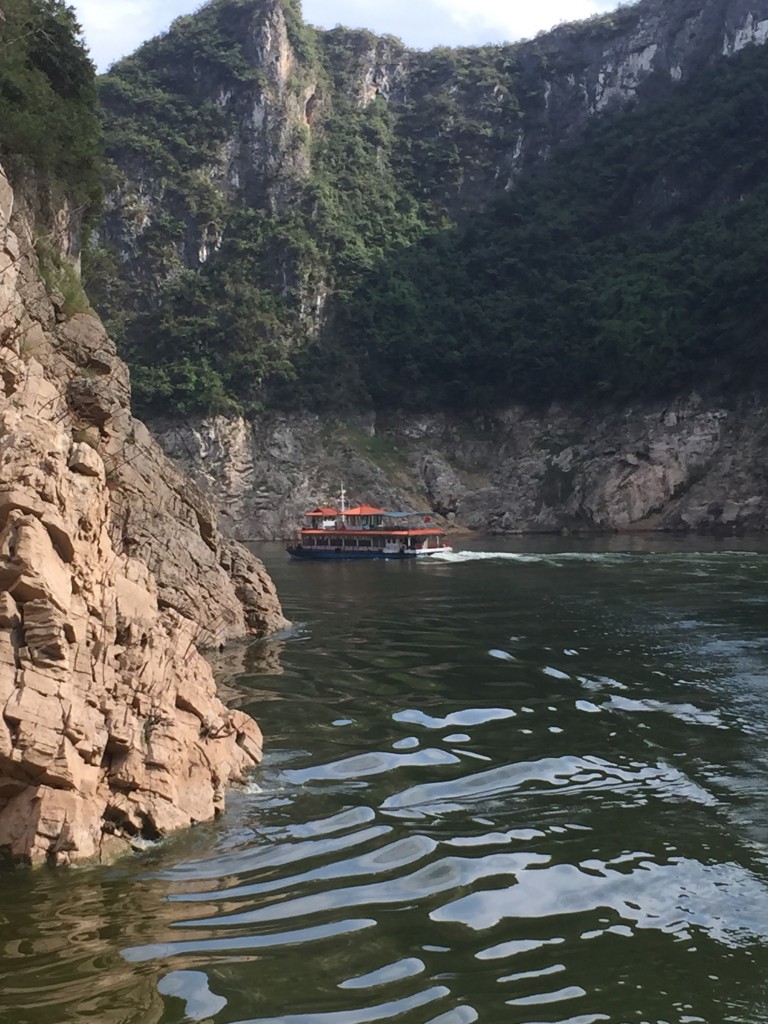
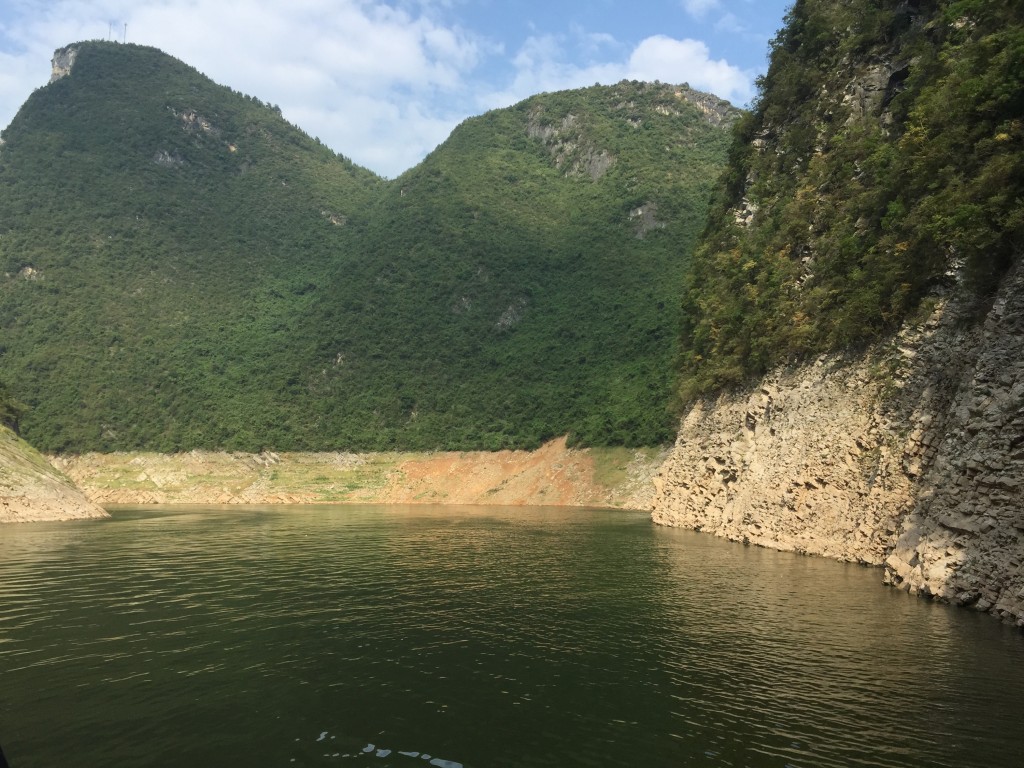
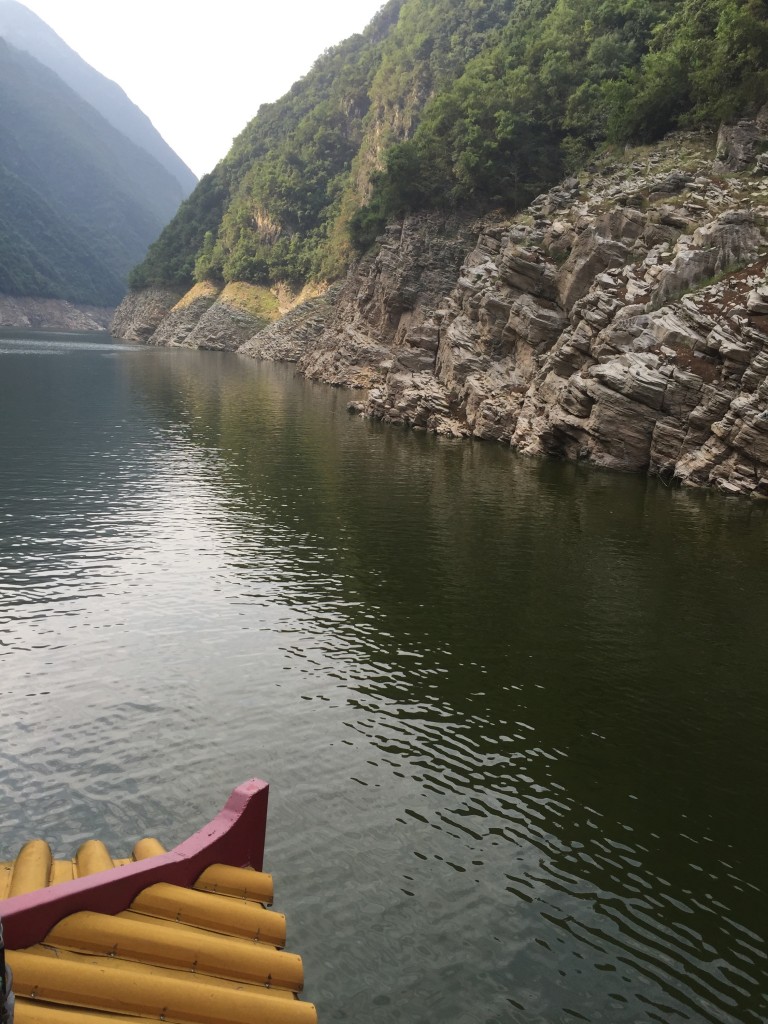 The second day we moved into the first of the spectacular Gorges – the Qutang Gorge and later the second, pretty Wu Gorge. We had a very interesting shore excursion to Shengnong Stream in the Lesser Three Gorges area which saw us all transferred into smaller boats to make our way into ever increasing narrow gorges and finally onto traditional narrow fishing boats to go up the Shengnong Stream. It was very interesting. And weird. We had a guide who was telling us all about herself and her family life (married, one son, 34 years old…?) but nothing about the gorge! Oh, and she sang for our entertainment and it sounded just like possums mating. 😀
The second day we moved into the first of the spectacular Gorges – the Qutang Gorge and later the second, pretty Wu Gorge. We had a very interesting shore excursion to Shengnong Stream in the Lesser Three Gorges area which saw us all transferred into smaller boats to make our way into ever increasing narrow gorges and finally onto traditional narrow fishing boats to go up the Shengnong Stream. It was very interesting. And weird. We had a guide who was telling us all about herself and her family life (married, one son, 34 years old…?) but nothing about the gorge! Oh, and she sang for our entertainment and it sounded just like possums mating. 😀 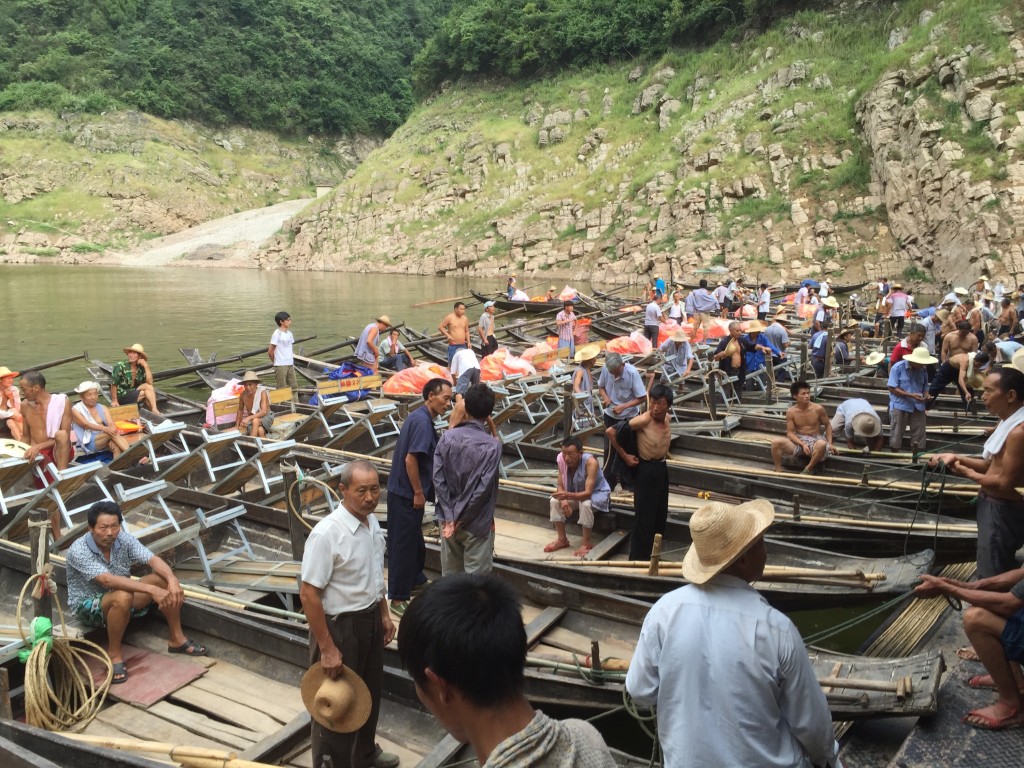
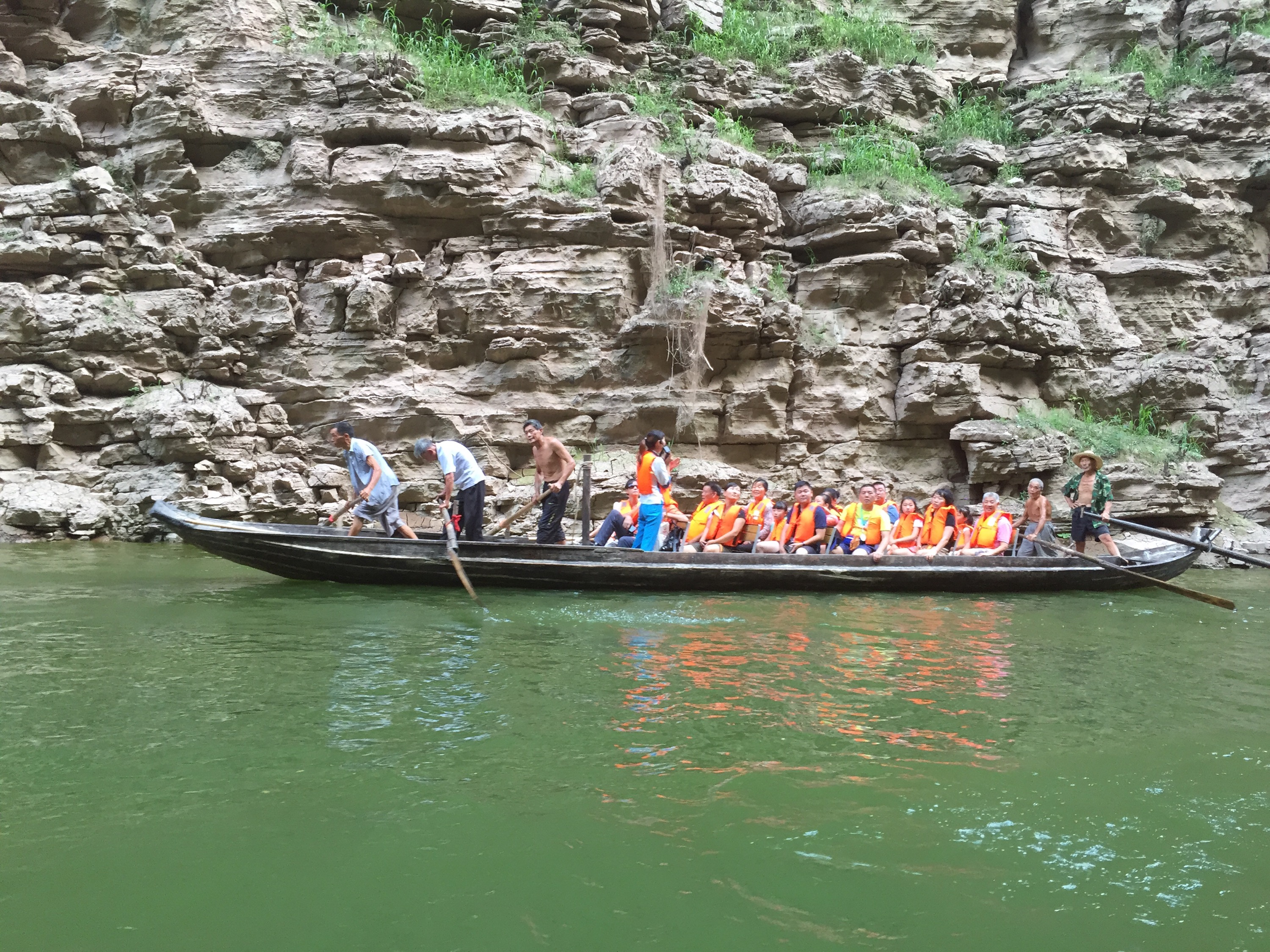 After that we moved into the western section of Xiling Gorge which was full of more beautiful scenery and many buildings that have been rebuilt to replicate what the water’s edge looked like before the terrain was flooded and the water level raised. Some sections of the gorges were very beautiful, especially if the clouds lifted/parted and you gained a glimpse of blue sky.
After that we moved into the western section of Xiling Gorge which was full of more beautiful scenery and many buildings that have been rebuilt to replicate what the water’s edge looked like before the terrain was flooded and the water level raised. Some sections of the gorges were very beautiful, especially if the clouds lifted/parted and you gained a glimpse of blue sky.
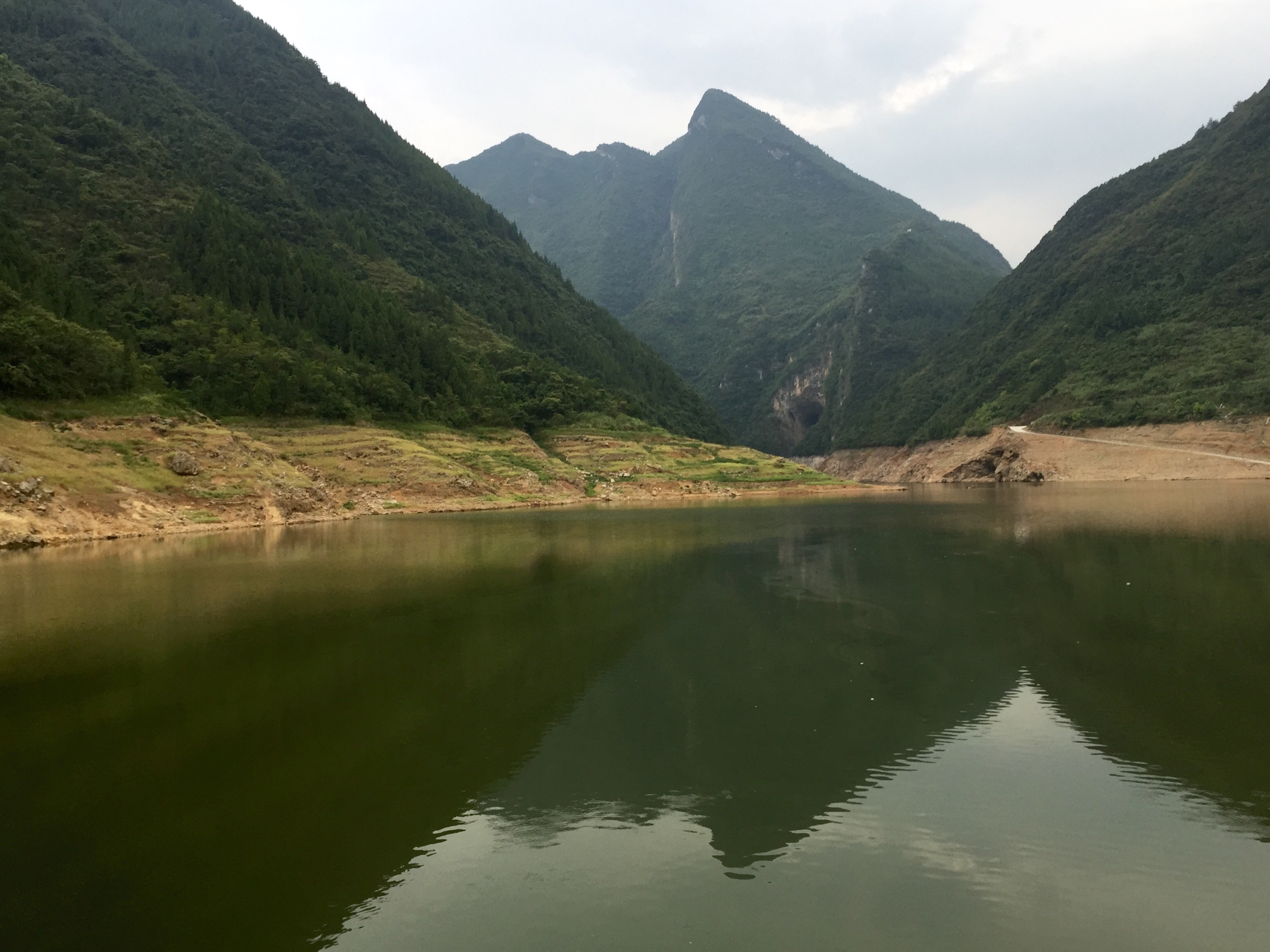 Before moving onto to see the Three Gorges Dam project. We arrived at a town called Sandouping where the workers and associated businesses to support them had popped up when the damn was being constructed. Construction started in 1993, and Sandouping was a relocated village at that point, with only 2000 inhabitants. During the height of construction, there were over 8,000 workers living in Sandouping, but with the project now 95% completed (there is only a ship elevator remaining to complete) many of the buildings are empty and many of the businesses that sprang up are closed. Many of those workers have gone on to work on other dam projects (there are 18 more hydro dams planned for upstream of the Three Gorges Dam), which have been given priority after the the Fukushima nuclear plant incident. Apparently China had planned to build 35 nulcear power plants until the earthquake in March 2011 ruptured the Fukushima power plant in Japan causing serious contamination issues. China then decided they would focus on hydro and solar generated power instead… which I think is a good thing for a country with a tragic history of industrial accidents due to lack of regulations, lack of enforcement, easy bribery/corruption of officials and regulators etc. As I write this, the fires of the enormous Tianjin chemical explosions are still burning and the chemical contaminaion from the accident is still very much unknown.
Before moving onto to see the Three Gorges Dam project. We arrived at a town called Sandouping where the workers and associated businesses to support them had popped up when the damn was being constructed. Construction started in 1993, and Sandouping was a relocated village at that point, with only 2000 inhabitants. During the height of construction, there were over 8,000 workers living in Sandouping, but with the project now 95% completed (there is only a ship elevator remaining to complete) many of the buildings are empty and many of the businesses that sprang up are closed. Many of those workers have gone on to work on other dam projects (there are 18 more hydro dams planned for upstream of the Three Gorges Dam), which have been given priority after the the Fukushima nuclear plant incident. Apparently China had planned to build 35 nulcear power plants until the earthquake in March 2011 ruptured the Fukushima power plant in Japan causing serious contamination issues. China then decided they would focus on hydro and solar generated power instead… which I think is a good thing for a country with a tragic history of industrial accidents due to lack of regulations, lack of enforcement, easy bribery/corruption of officials and regulators etc. As I write this, the fires of the enormous Tianjin chemical explosions are still burning and the chemical contaminaion from the accident is still very much unknown.
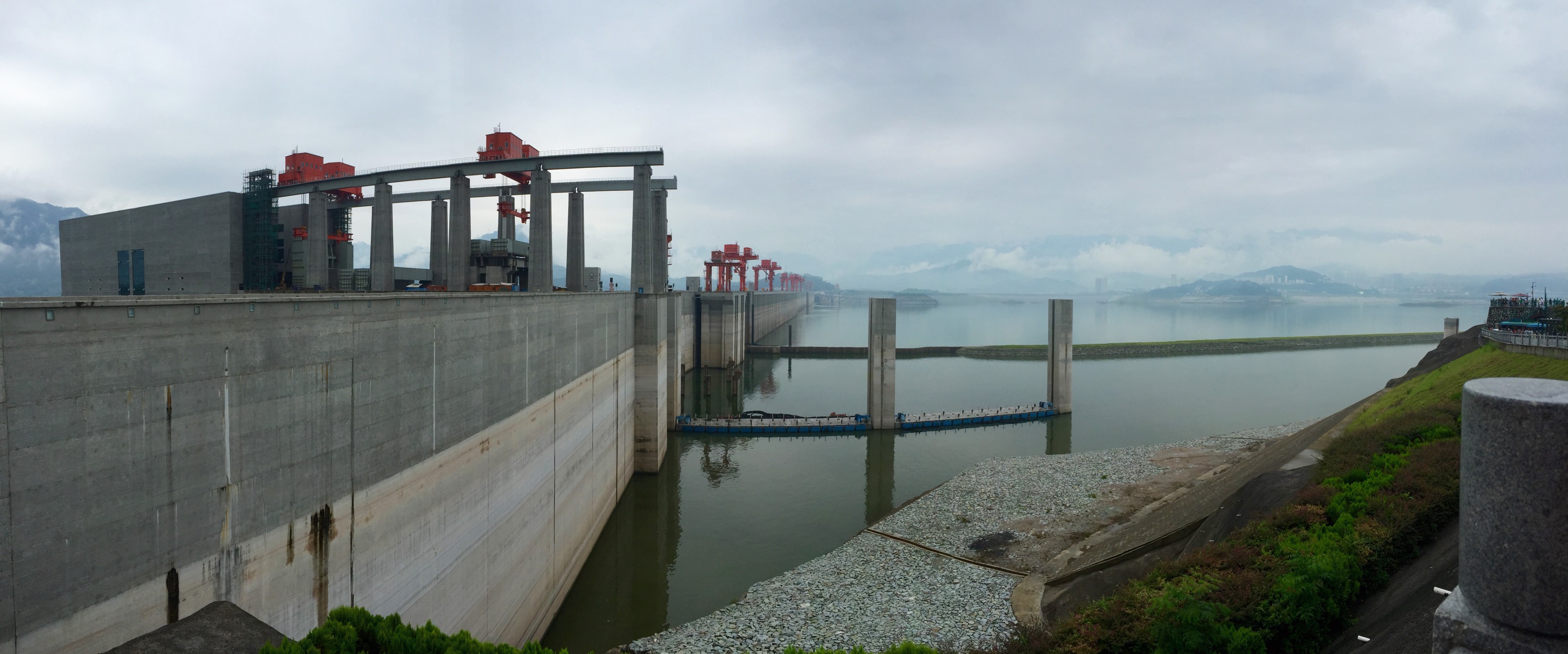 Anyway – back to the dam. The dam has two lots of ship locks, which allow the ships to move past the dam since it was completed in 2003, and work in five stages – separate locks going upstream and down stream. We went through only four of the locks last night as the water level in the resevoir is kept low at this time of year during the flood season. It takes about 3-4 hours to move a boat through the lock system, but there are very long waits to get through. The locks shift approximately 200 boats per day and it is completely free – somehow the governement decided that the passage through the Yangtze was always free, and that it wasn’t fair to charge boats to go through the dam’s lock system when they used to be able to go through there for free. Interesting logic for a government that has toll roads EVERYWHERE, but who is going to complain. The ship elevator that is under construction for ships of 3000 tonnes or less is due for completion by the end of this year and the project will be entirely finished.
Anyway – back to the dam. The dam has two lots of ship locks, which allow the ships to move past the dam since it was completed in 2003, and work in five stages – separate locks going upstream and down stream. We went through only four of the locks last night as the water level in the resevoir is kept low at this time of year during the flood season. It takes about 3-4 hours to move a boat through the lock system, but there are very long waits to get through. The locks shift approximately 200 boats per day and it is completely free – somehow the governement decided that the passage through the Yangtze was always free, and that it wasn’t fair to charge boats to go through the dam’s lock system when they used to be able to go through there for free. Interesting logic for a government that has toll roads EVERYWHERE, but who is going to complain. The ship elevator that is under construction for ships of 3000 tonnes or less is due for completion by the end of this year and the project will be entirely finished.
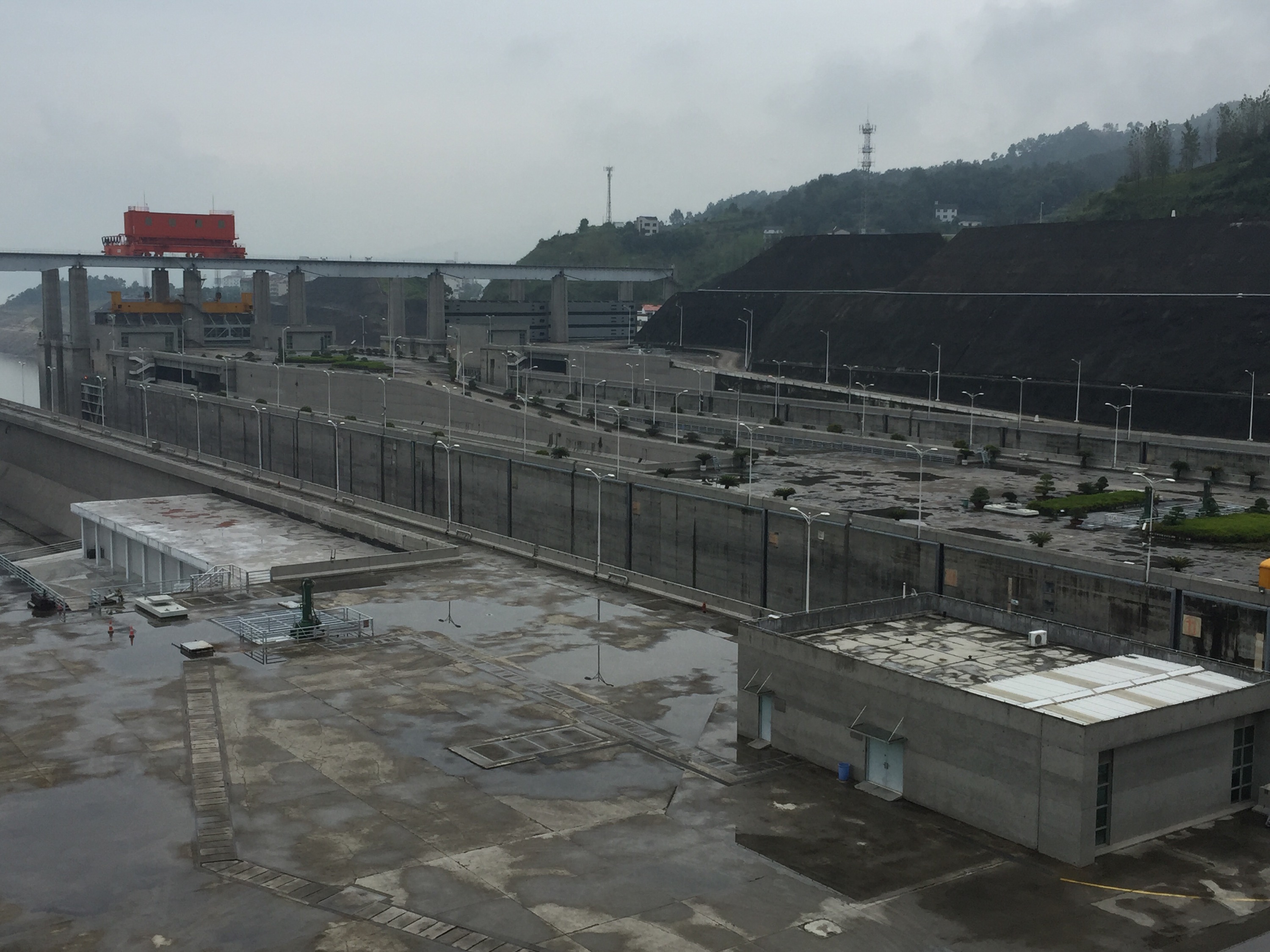 Before the dam was built, the water in this section of the Yangtze was a mere 65m deep, and now the average depth of the reservoir is 175m deep. So massive swathes of land upstream were flooded, relocating some 1.3 million people and flooding important cultural and historical sites – so it has been a contenious project for some time. It’s generating metric shit tonnes of power (you can Google the details if you are interested – I can’t, here behind the Great Firewall of China).
Before the dam was built, the water in this section of the Yangtze was a mere 65m deep, and now the average depth of the reservoir is 175m deep. So massive swathes of land upstream were flooded, relocating some 1.3 million people and flooding important cultural and historical sites – so it has been a contenious project for some time. It’s generating metric shit tonnes of power (you can Google the details if you are interested – I can’t, here behind the Great Firewall of China).
Back on the boat and an hour left of our River trip to traverse the Third Gorge. This to me, was the most beautiful area for scenery. 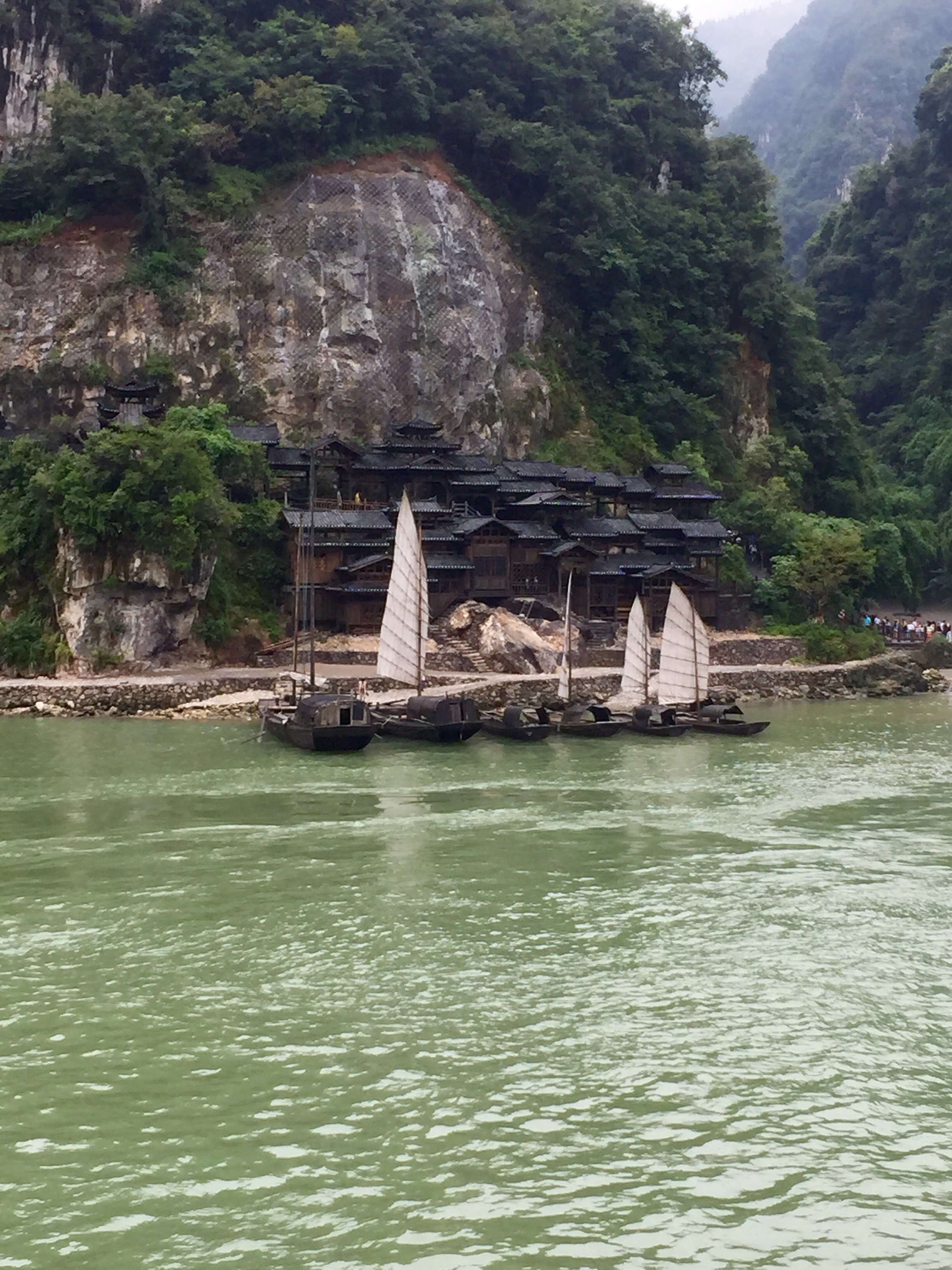
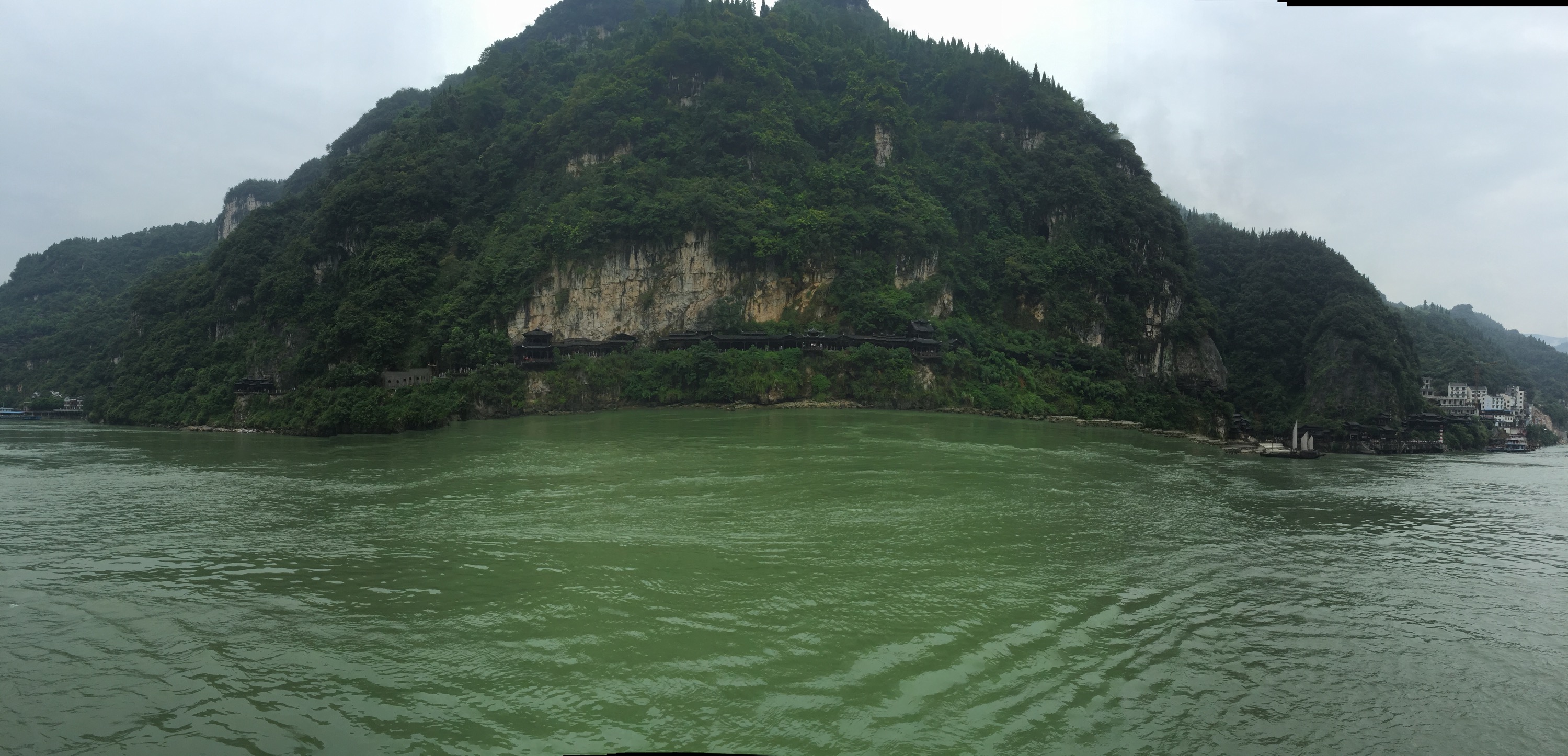
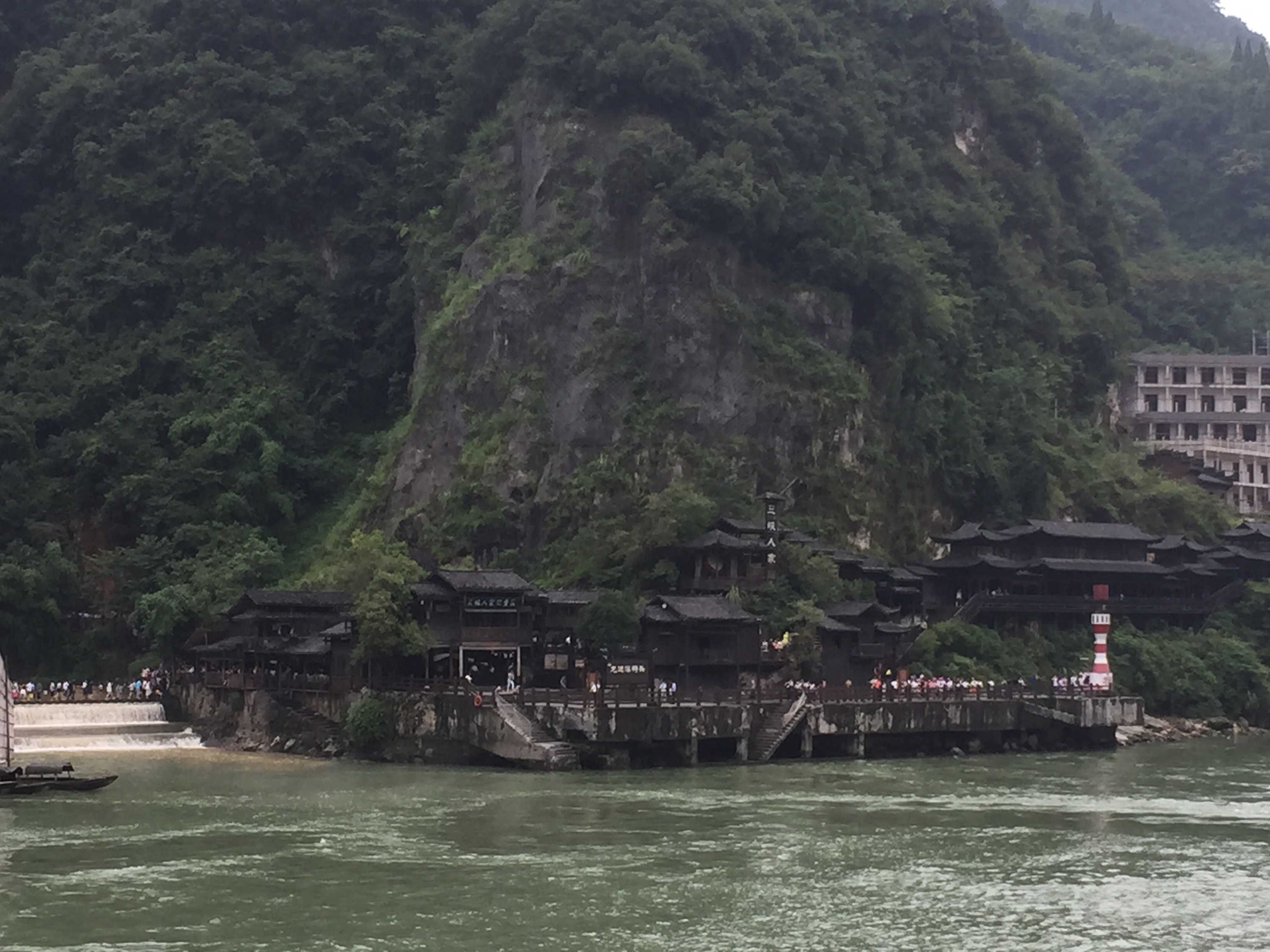
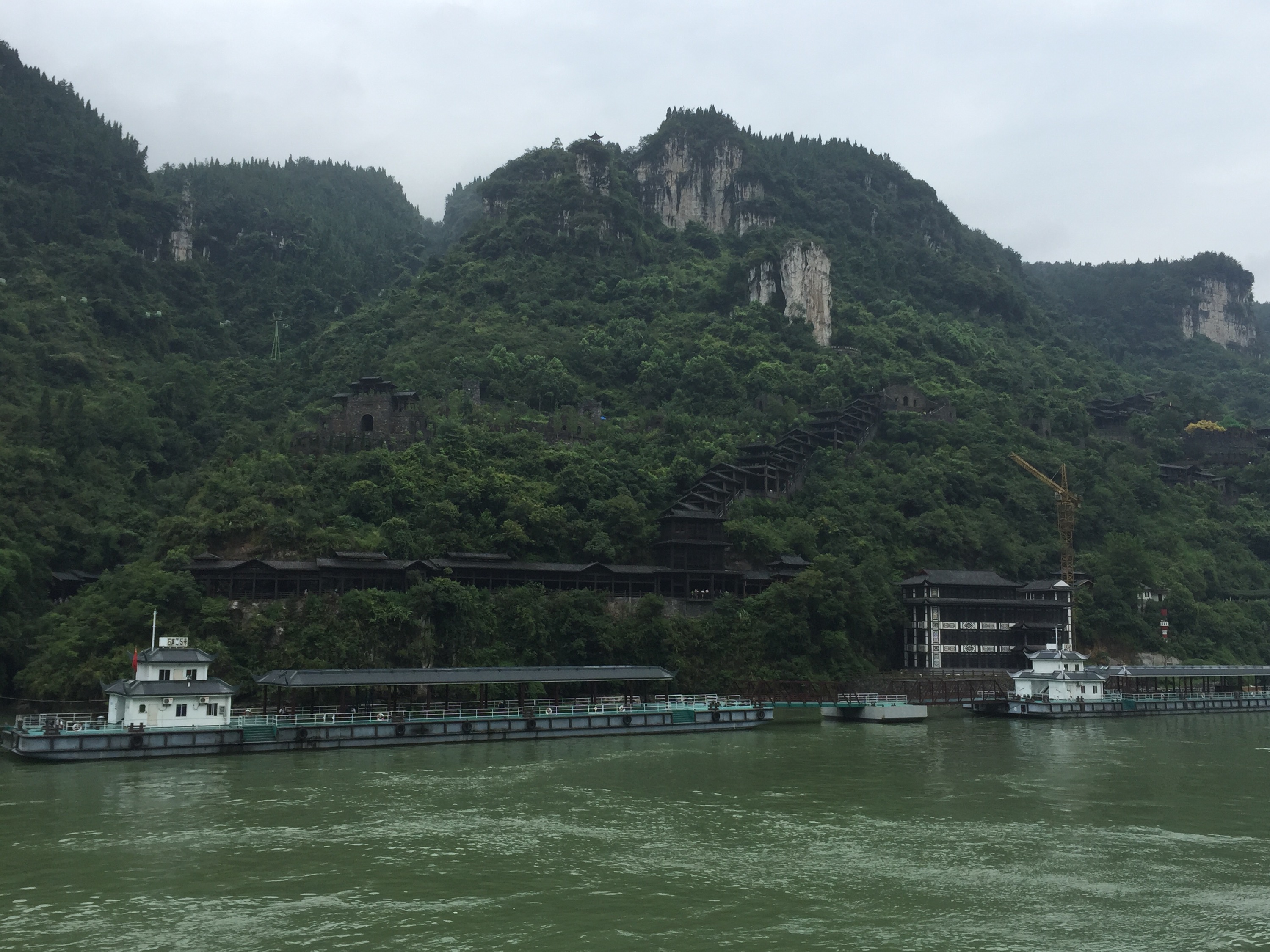 After that we had a whirlwind tour of Yichang. Yichang according to our local transit guide is ‘a small city of only 4.1million peoples’. The only other things I learned in the few hours we were there for a lunch break was that 1) ‘Yichang’ means prosperity but driving through most of it, Ginger the guide referred to the local housing as ‘shanty houses’ and we were driving through what most Westerners would call ‘slums’. :/ And apparently the slum town of Yichang has enormously wealthy areas too, which are slowly compulsorily acquiring the shanty house areas from their occupants for new development at vastly out priced accommodations the original occupants can’t afford.
After that we had a whirlwind tour of Yichang. Yichang according to our local transit guide is ‘a small city of only 4.1million peoples’. The only other things I learned in the few hours we were there for a lunch break was that 1) ‘Yichang’ means prosperity but driving through most of it, Ginger the guide referred to the local housing as ‘shanty houses’ and we were driving through what most Westerners would call ‘slums’. :/ And apparently the slum town of Yichang has enormously wealthy areas too, which are slowly compulsorily acquiring the shanty house areas from their occupants for new development at vastly out priced accommodations the original occupants can’t afford.
The other thing I learned – thrill seekers like to holiday in Yichang… you can go bungee jumping over a 165m gorge for 150 yuan (about AU$30) and it includes a free meal. O.o Given China’s interesting attitudes towards occupational health and safety and liability issues… We thought we’d give it a miss!!

